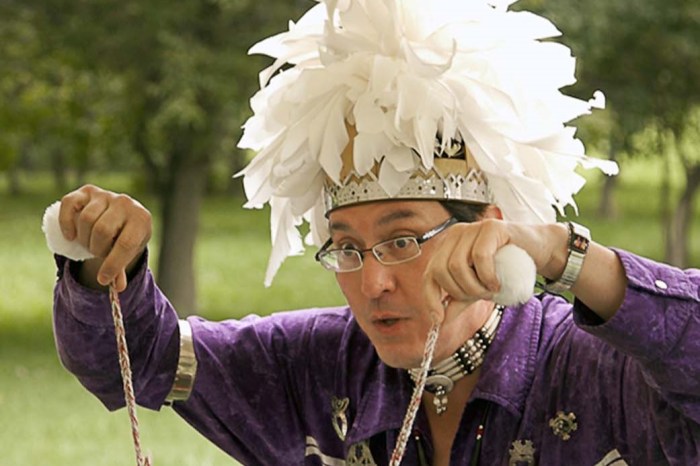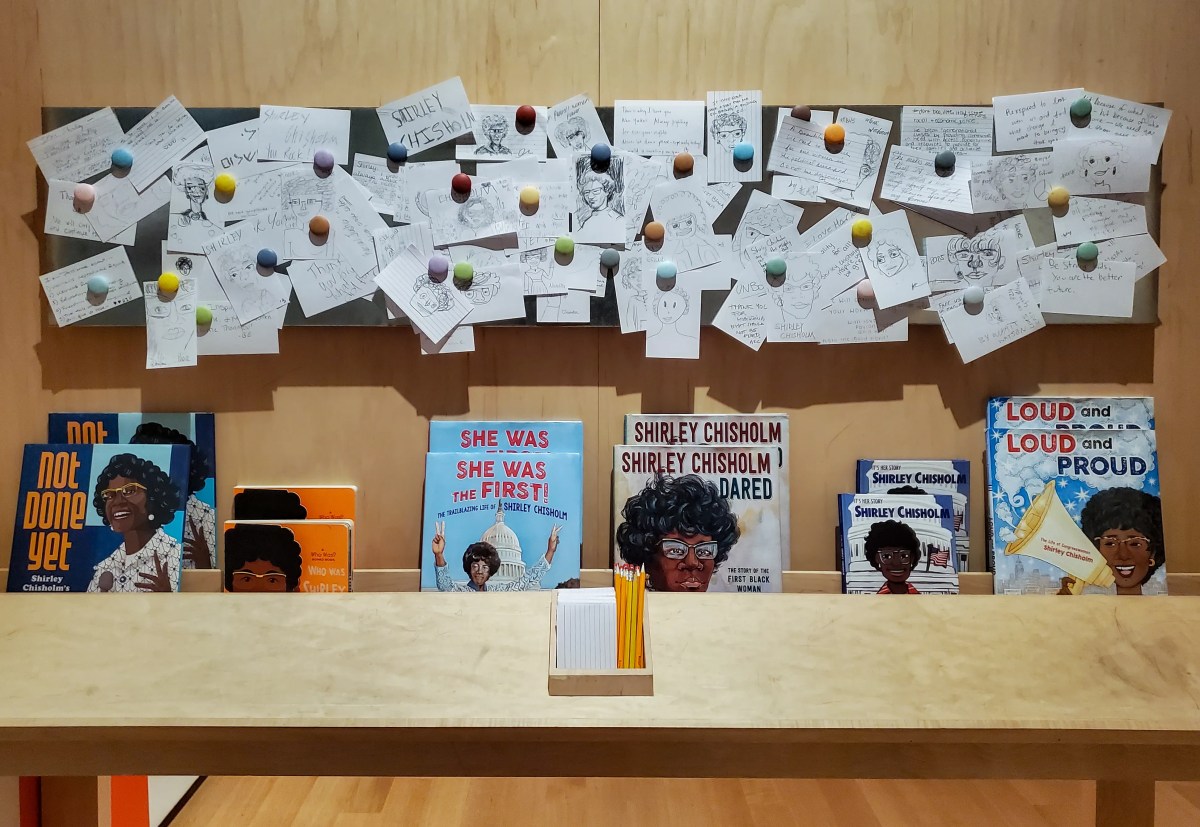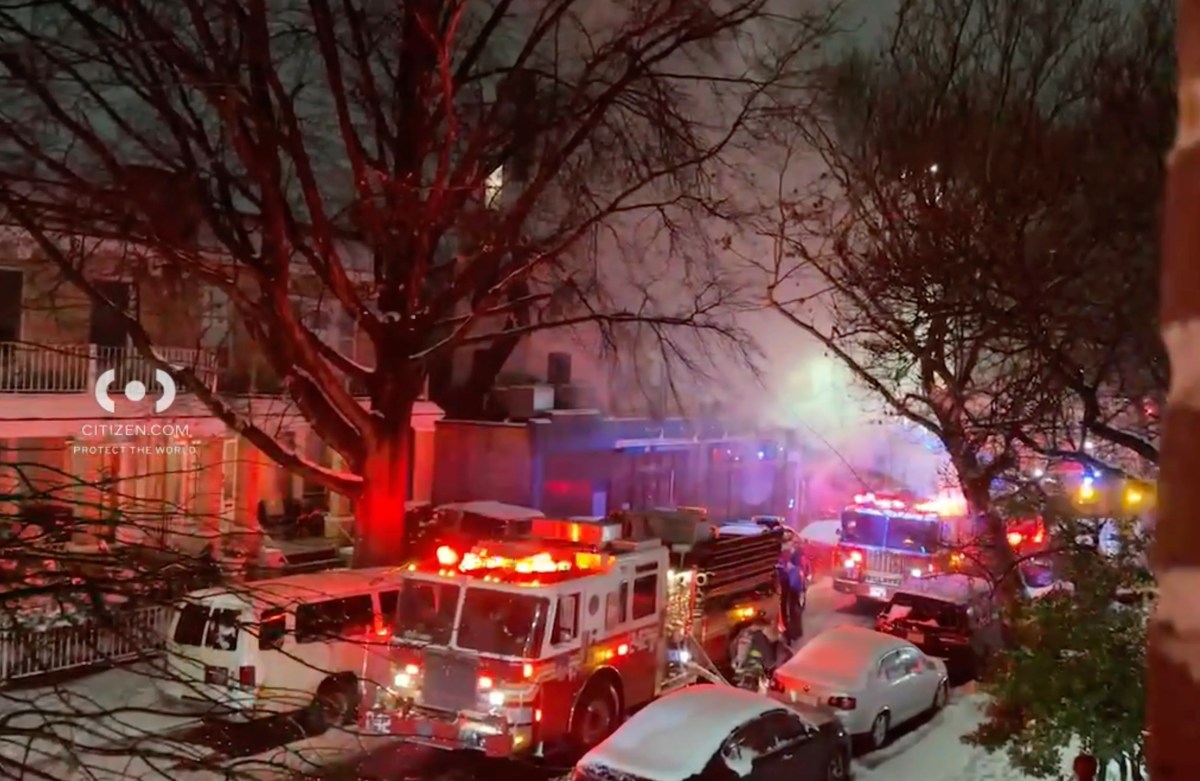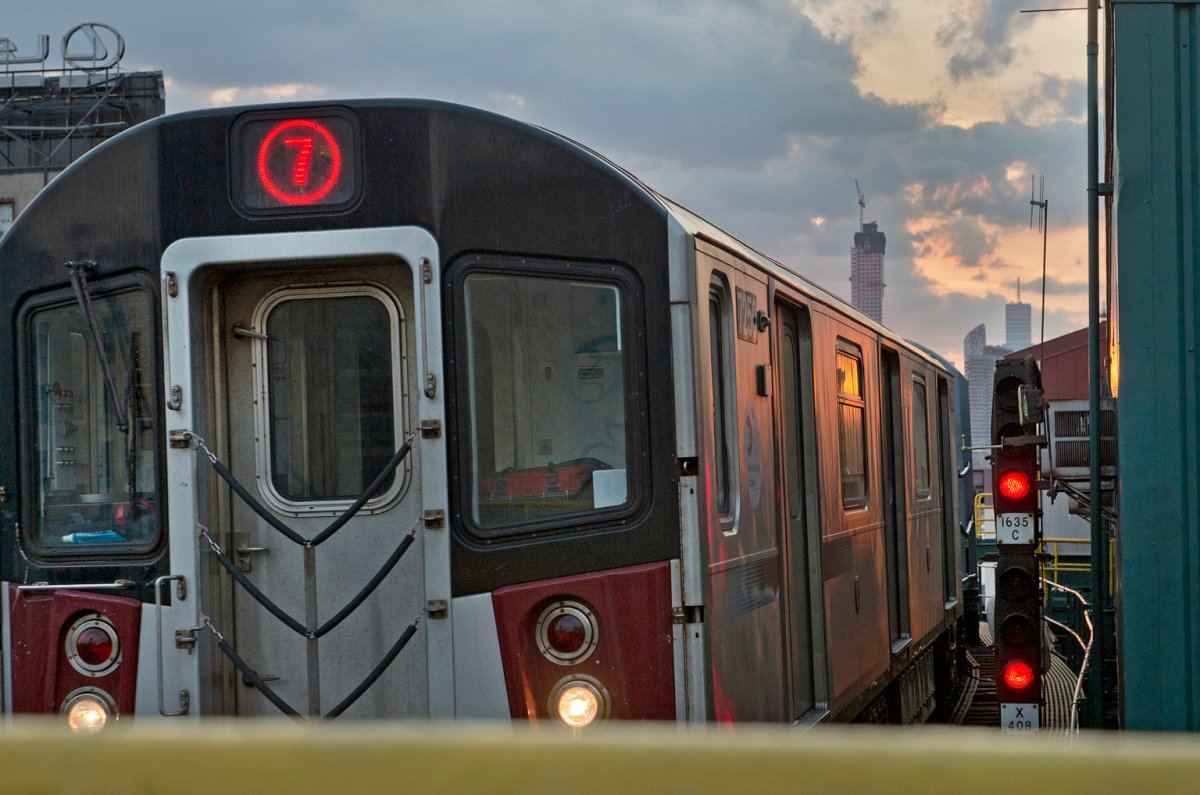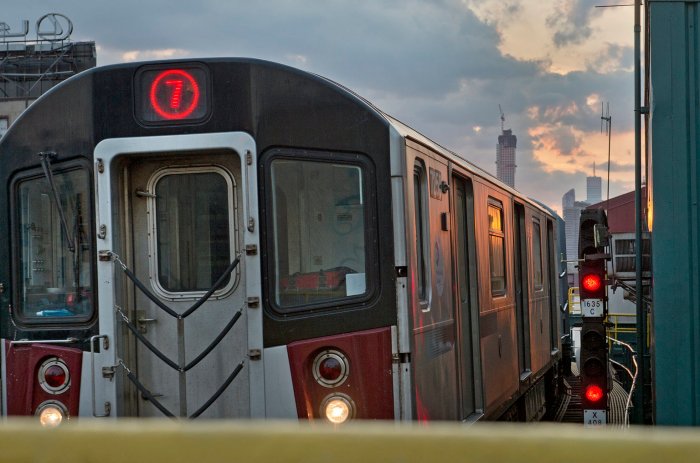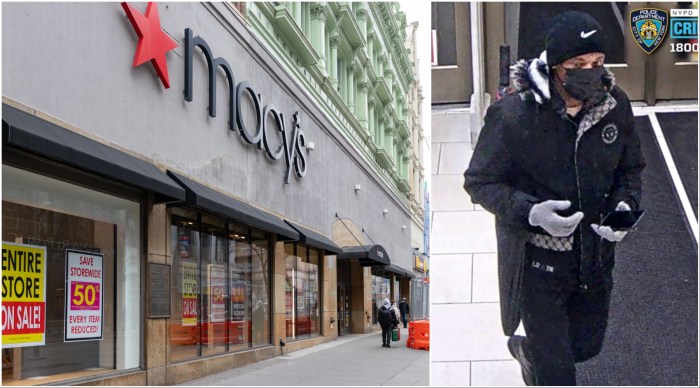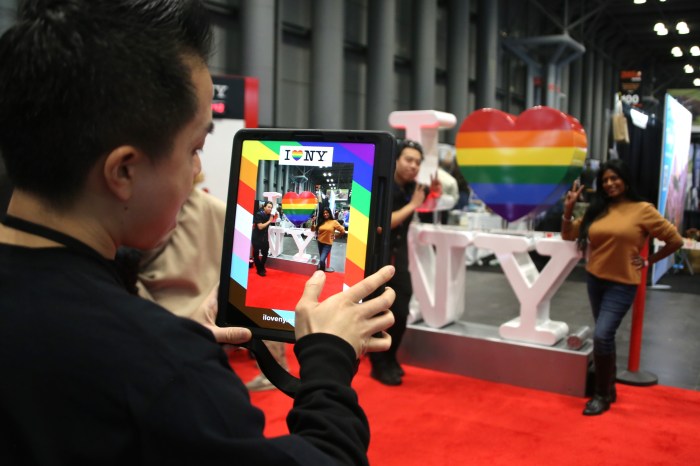
About 80 pieces of art and poetry hang in a gallery space in Chelsea, colorful images popping off the stark white walls. The artists, however, won’t see their work displayed — they’re incarcerated at Rikers Island.
The exhibit inside the School of Visual Arts’ gallery on West 21st Street is part of the Creative Arts Therapy Program offered to Rikers inmates by the city’s Health + Hospitals and Correctional Health Services. This year’s theme, “MySelf,” inspired images of self-reflection: a colorful mermaid swims with the words “emotional” and “elusive” penned on top; a man sports both devil horns and a halo, torn between the two; another man sleeps, a description alludes to his depressing environment.
“It’s an opportunity for them to express their frustrations, understand why they often feel angry. These modalities provide a safe space for doing that, opposed to a verbal interaction or interview,” said Lesley Achitoff, the director of the program. “This is a chance where they’re not being examined, they’re given an opportunity to self-express. That has been very freeing and profoundly therapeutic for them.”
A few days before the exhibit’s opening, former Rikers inmate Hyseem McIndoe, aka "Bishop," a former program participant himself, surveyed the work. He intently studied the piece of a man torn between good and evil, reflecting on how being part of the program changed his perspective, and showed him how art could become a career.

McIndoe, 21, spent nine months at Rikers when he was 17 on robbery charges of robbery. The Creative Arts Therapy Program was the first time his work was displayed in a gallery. He’s since had two more showings.
“I wanted to keep my faith and my art skills throughout all the bad things that were going on, I was still drawing,” said McIndoe, who is now working on the Audubon Sculpture Project. “It’s hard to continue being creative in a place like that because it sucks all the creativity out of you. Just to see all of this work here, it’s amazing that these kids are still pushing and believing in themselves.”
The program has existed in a smaller capacity for a decade, but a cash infusion in 2016 from ThriveNYC — first lady Chirlane McCray’s mental health initiative — allowed it to significantly expand. Achitoff said the program has hosted more than 3,800 art therapy sessions since 2016, when it received the initial $500,000. The program now receives about $1 million each fiscal year from ThriveNYC, and has expanded to include 12 art therapists. Achitoff said the voluntary classes are offered three times per week and include eight to 10 people in each session.
This is the fourth year SVA has offered its gallery space for the month of October, extending it this year through Nov. 16, she said. And while the artists from this year’s exhibit won’t be there in person, viewers moved by the art can write letters to them.
"It’s just so empowering for them,” Achitoff said. “This has been very, very healing for them to share their humanity and have that humanity shared back. It’s really very validating for them.”







